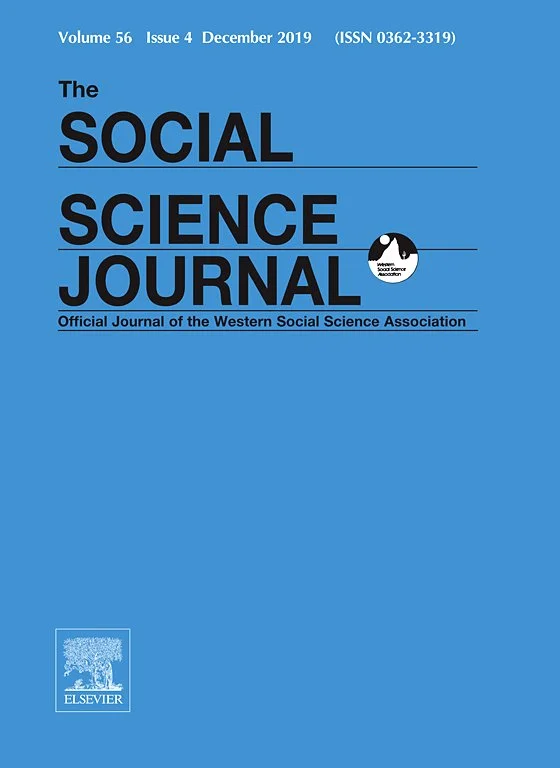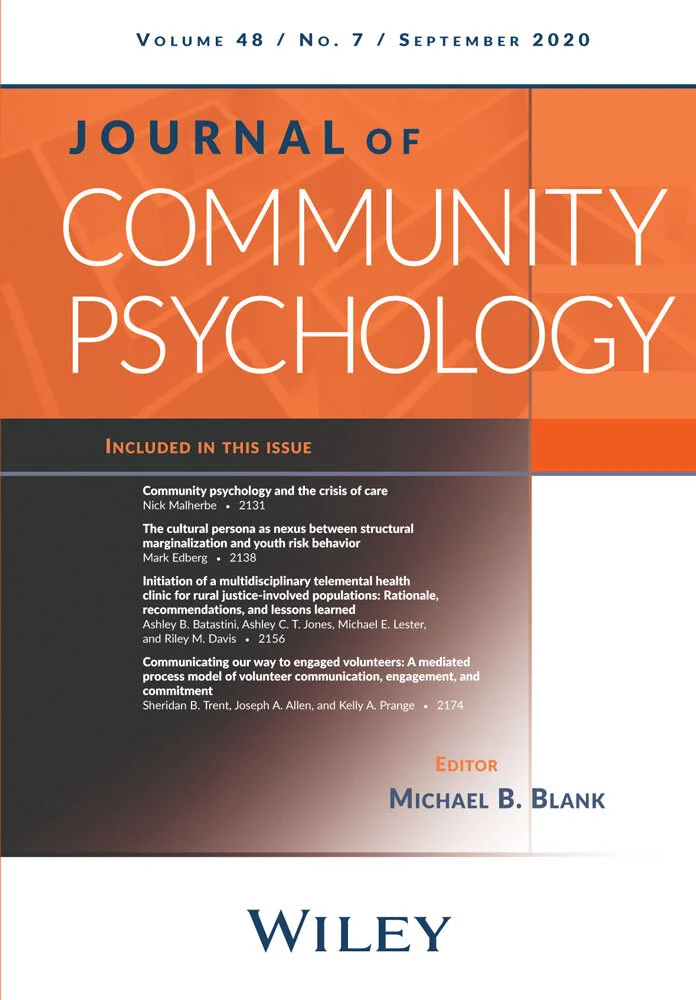World-Renowned in a Burgeoning Field
Based upon a recent review of meeting science literature, as of 2020, I’ve written/co-authored 25% of all research in meeting science.
Well-Funded
In less than 10 years, my research has generated more than $20 million in external funding.
Recent Awards
My work has earned a 2020 Emerald Literati Award, the 2022 Slavin-Patti Award, and a nomination for the 2023 INGRoup Best Conference Paper.
Recent Peer-Reviewed Journal Articles
Workplace Meetings
My most extensive and most known area of research is my pioneering work in the study and improvement of workplace meetings and the development of meeting science.
Since 2006 I have engaged in a focused study of meetings in organizations with a particular interest in improving meetings generally. Recent estimates suggest that more than 55 million meetings occur each day in the U.S. and approximately half of all meetings are rated as poorly functioning. Thus, a need exists to identify the causes of poor meetings and the cures to this workplace epidemic. Such research's ultimate goal includes improving group/team functioning, organizational effectiveness, and individual engagement in work-related tasks.
Here are a few selected works that illustrate the development of this area and my expertise:
Allen, J. A. & Lehmann-Willenbrock, N. (2022). The Science of Workplace Meetings: Integrating Findings, Building New Theoretical Angles, and Embracing Cross-Disciplinary Research. Introduction to the Special Issue. Organizational Psychology Review. DOI: https://doi.org/10.1177/20413866221122896.
Given the focal role that group and team meetings play in shaping employees’ work lives (and schedules), the scarcity of conceptual and empirical attention in extant organizational psychology research is a major oversight that stalls scientific understanding of organizational behavior more broadly. With the explosion of meetings that has occurred in recent years, in part due to the COVID-19 pandemic, some even wonder why organizational psychology has not already figured out meetings from both a science and practice perspective. The purpose of this paper is to review the literature on the science of workplace meetings by identifying the core features of the phenomenon and sorting the extant literature along these features. The five core features identified include leading, interacting, managing time, engaging, relating. We couch these features within a larger framework of how meetings are the intersection of collaboration in organizations and a major key to organizational success. Against this conceptual backdrop, we reviewed a total of 253 publications, noting opportunities for future research and discussing practical implications. We conclude our review with an overview of the special issue on workplace meetings, which is an overt attempt to launch research that will fill the theoretical and conceptual gap in the science of meetings.
Lubstorf, S., Allen, J. A., Eden, E., Kramer, W., Baak, M., Reiter-Palmon, R., & Lehmann-Willenbrock, N. (2023). Digging into “Zoom Fatigue”: A Qualitative Exploration of Remote Work Challenges and Virtual Meeting Stressors. Merits, 3(1), 151-166. DOI: 10.3390/merits3010010.
Purpose: With the onset of the COVID-19 pandemic, employees suddenly had to work remotely and realize all work-related social interaction in virtual formats. The sudden shift to the virtual format came with new workplace stressors. To understand the stressors of remote work and videoconferences, we present two qualitative studies. The aim of this study is to better understand the stress associated with remote work and videoconferencing, with an emphasis on how workers cope with the added stress. Methodology: We applied thematic analysis to open-ended survey data from employees in the US (n = 349) and in-depth telephone interviews of 50 meeting leaders from the US and Germany. Findings: We identified the work–home interface, technology, and communication issues as key challenges of remote work. Further, we found camera usage, early meeting phases, and multitasking to be central stressors of videoconferences. Finally, we identified individual- and team-level coping strategies to reduce the impacts of virtual meeting stressors on employees. Originality: Our research contributes to the emerging field studying the effects of virtual work and videoconferences on employees. We provide an overview of the challenges of remote work at the early stages of the pandemic, and we present an overview of the stressors that emerge in virtual meeting environments. We discuss insights into why videoconferences may fatigue employees. Including German and US samples, our research allows a cross-cultural comparison of videoconferencing stressors. Finally, we present actionable practical recommendations to improve videoconferences.
Boydston, A., Wallach, H., Young, D., & Allen, J. A. (2023). The role of humor in work group dynamics in times of crisis: Evidence from the federal open market committee (FOMC). Small Group Research. DOI: 10.1177/10464964231173335.
Humor is a key indicator of the health of work groups, including during times of crisis. Moreover, studies of newly formed groups show that the type of humor used can change as members of a group get to know one another and form bonds. Yet in the context of a relatively established work group, can the nature of the group’s humor evolve in response to a crisis? We address this question in the context of the Federal Open Market Committee (FOMC), examining whether the FOMC was able to pivot its use of humor following the 2007 financial crash. As hypothesized, we find a post-crash increase in “affiliative” humor in general, and “playful banter” specifically, indicating effective group dynamics among members (which bodes well for the global economy). The FOMC thus offers evidence that established work groups can use humor as a dynamic mechanism for adapting to new circumstances.
Allen, J. A., & Lehmann-Willenbrock, N. (2023). Story-telling, well-organized, or solution-focused meeting? Investigation of behavior-based group profiles and group performance. Small Group Research. DOI: 10.1177/10464964231182098.
Insights into the behavioral profile of groups during meetings help us understand why some groups outperform others on meeting and work tasks. The presented studies investigate behavior-based group profiles in meetings and their relation to group performance. A total of 101 problem-solving meetings took place in two studies in a laboratory setting; data were coded using the act4teams coding scheme and analyzed using INTERACT software. The findings indicate there are four distinct group profile clusters: story-telling, well-organized networking, solution-focused, and problem-focused profiles. These behavior-based group profiles were meaningfully and differentially linked to group performance in the context of a meeting task.
Allen, J. A., Eden, E., *Castro, K. C., *Smith, M., & Mroz, J. (2023). “So, why were you late again?”: Social account’s influence on the behavioral transgression of being late to a meeting. Merits, 3, 459-477. https://doi.org/10.3390/merits3030027.
People often offer an excuse or an apology after they do something wrong in an attempt to mitigate any potential negative consequences. In this paper, we examine how individuals employ social accounts when explaining their interpersonal transgression of meeting lateness to others in actual work settings. We examined the different combinations of social accounts and the social outcomes (forgiveness, helping behaviors, and intentions to continue interaction) of being late to a meeting. Across two studies using complementary experimental and survey methods, we found that a majority of late arrivers’ explanations included remorse and that including remorse significantly influences helping behaviors. Furthermore, we found no interaction between excuses and offering remorse. Implications of these findings and future directions are discussed.
* indicates student author
Occupational Safety & Health
My third major area of research focuses on occupational safety, health, and employee well-being.
Of particular note, I am the first researcher to investigate and connect after-action review (i.e. debriefs) meetings to group and organizational safety climate and other desirable outcomes. The studies listed here begin to investigate the various aspects of after-action review meetings and debriefs, which are informal discussions that occur among team members concerning a recent event or activity. These discussions provide a context for learning, team development, and the promotion of safety related behaviors. My recent work with colleagues related to post-fall huddles, a type of after-action review, is particularly important to promoting safety and well-being in health settings.
Here are a few selected works that illustrate the development of this area and my expertise:
Taylor, J., Murray, R., Davis, A., Brandt-Rauf, S., Allen, J. A., Borse, R., Pellechia, D., & Picone, D. (2022). Model Policies to Protect U.S. fire-based EMS Responders from Workplace Stress and Violence. New Solutions: A Journal of Environmental and Occupational Health Policy, 3(2), 119-131. doi: 10.1177/10482911221085728.
The stress and violence to fire-based emergency medical service responders (SAVER) Systems-Level Checklist is an organizational-level intervention to address stress and violence in emergency medical service (EMS), focused on the development of policy and training. Fire and EMS leadership, first responders, dispatchers, and labor union representatives participated in the SAVER Model Policy Collaborative to develop model policies that resulted from the most feasible checklist items. ThinkLets technology was employed to achieve consensus on the model policies, and an Action SWOT analysis was then conducted to assess facilitators and barriers to policy implementation. The resultant model policies are a systems-level workplace violence intervention for the U.S. fire and rescue service that is ready for implementation. Expected improvements to organizational outcomes such as burnout, job engagement, and job satisfaction are anticipated, as are decreasing assaults and injuries. The SAVER Model Policies have the potential to inform national standards and regulations on workplace violence in EMS.
Ogbonnaya, U. C., Thiese, M. S., & Allen, J. A. (2022). Burnout and engagement’s relationship to drug abuse in lawyers and law professionals. Journal of Occupational and Environmental Medicine, 64(7), 621-630.
Objective: Investigate the associations between drug abuse and the prevalence of the engagement and burnout dichotomy in law professionals.
Methods: Eligible participants completed a questionnaire where odds ratios of drug abuse and other confounding variables and their association to engagement or burnout were calculated using multiple logistic regression.
Results: When looking at all law professionals, burnout is a statistically significant predictor for drug abuse ( P = 0.04, not shown). Law professionals whose burnout scores fell in the highest bin have 4.71 (95% CI [1.38-16.08]) times higher odds of having a problem with drug abuse than those whose burnout scores fell in the second bin.
Conclusion: Study findings showed a possible way to affect the prevalence of drug abuse in law professionals by affecting the engagement and burnout dichotomy.
Allen, J. A., Thiese, M. S., Eden, E., & Knowles, S. E. (2022). Why am I so exhausted?: Exploring meeting-to-work transition and recovery from virtual meeting fatigue. Journal of Occupational and Environmental Medicine, 64(12), 1053-1058. DOI: 10.1097/JOM.0000000000002641.
Objective: Ineffective meetings have been well-documented as presenting considerable direct (eg, salary) and indirect costs (eg, employee burnout). We explore the idea that people need meeting recovery, or time to transition from meetings to their next task. Doing so may reduce employee burnout.
Methods: We used a quantitative survey of working adults' last meeting to determine the relationship between meeting outcomes (satisfaction and effectiveness) and meeting recovery.
Results: We found that meeting outcomes are related to meeting recovery and that relationship is moderated by the degree to which the meeting was relevant to the individual. Implications for theory and practice are discussed to provide concrete recommendations for researchers, managers, and consultants.
Conclusions: This study explores virtual meeting fatigue with a focus on meeting quality and explores the need for recovery after workplace meetings.
Raposa, M. E., Mullin, G., Murray, R. M., Castro, K., Fisher, A. B., Gallogly, V., Davis, A. L., Resick, C. J., Lee, J., Allen, J. A., & Taylor, J. A. (2023). Assessing the Mental Health Impact of the COVID-19 Pandemic on US Fire-Based EMS Responders: A Tale of Two Samples (The RAPID Study I). Journal of Occupational and Environmental Medicine, 65(4), e184-e194. DOI: 10.1097/JOM.0000000000002745.
Objective: This study aimed to examine the COVID-19 pandemic's impact on fire service safety culture, behavior and morale, levers of well-being, and well-being outcomes.
Methods: Two samples (Stress and Violence against fire-based EMS Responders [SAVER], consisting of 3 metropolitan departments, and Fire service Organizational Culture of Safety [FOCUS], a geographically stratified random sample of 17 departments) were assessed monthly from May to October 2020. Fire department-specific and pooled scores were calculated. Linear regression was used to model trends.
Results: We observed concerningly low and decreasing scores on management commitment to safety, leadership communication, supervisor sensegiving, and decision-making. We observed increasing and concerning scores for burnout, intent to leave the profession, and percentage at high risk for anxiety and depression.
Conclusions: Our findings suggest that organizational attributes remained generally stable but low during the pandemic and impacted well-being outcomes, job satisfaction, and engagement. Improving safety culture can address the mental health burden of this work.
Allen, J. A., Reiter-Palmon, R., Jones, K., Sabalka, L., *Ciagala, K., & Meens, A. (2023). Nurses’ experience implementing an automated video monitoring system to decrease risk of patient falls during a global pandemic. Healthcare, 11, 2556. https://doi.org/10.3390/healthcare11182556.
Healthcare is a complex sociotechnical system where information systems (IS) and information technology (IT) intersect to solve problems experienced by patients and providers alike. One example of IS/IT in hospitals is the Ocuvera automated video monitoring system (AVMS), which has been implemented in more than 30 hospitals. The purpose of this study was to evaluate nurses' attitudes toward AVMS implementation over time as they received the training program developed for this intervention. Consistent with the job demands-resources (JDR) model, we found that perceptions of AVMS usefulness increased over time and were positively associated with perceptions of social influence and behavioral control. These results were consistent with our finding that there was a significant decrease in the risk of unassisted falls from the bed from baseline to intervention. Leaders in hospital systems and healthcare organizations may want to consider implementing an AVMS as researchers continue to test, verify, and demonstrate the effectiveness of these interventions for improving patient well-being.
* indicates student author
Organizational Community Engagement
My second major area of research is that of organizational community engagement, or the efforts made by organizations and their stakeholders to reach out and assist in the building, and uplifting of their communities. My work in this area includes much of my pro-bono consulting with more than 300 nonprofit organizations, as well as peer-review research on volunteer management, and a culminating book in the Cambridge Handbook Series entitled, The Cambridge Handbook of Organizational Community Engagement and Outreach. This work's ultimate goal is to provide science-based practical application and direction to leaders of organizations seeking ways to build their communities.
Here are a few selected works from this area that demonstrate my expertise:
Allen J. A., Yack, M.,& Hart, S. E. (2022).Community engagement at academic health centers: An introduction to this special issue. Metropolitan Universities, 33(3), 3-9. DOI: 10.18060/26312
Academic health centers are essential in many communities, providing health professions education and patient-focused services. These institutions often serve as anchor institutions for community-engaged efforts to serve underserved populations. During the COVID-19 pandemic, the central nature of academic health centers, and the well-being of communities, were on full display. This special issue aims to contribute to and expand our understanding and inform empirically the evidence-based programming, interventions, and policies that strengthen community engagement at academic health centers.
Allen, J. A. & Augustin, T. (2021). So much more than cheap labor! Volunteers engage in emotional labor. The Social Science Journal. DOI: 10.1080/03623319.2021.1900671
While volunteers provide the backbone for many nonprofits, the volunteer rate is the lowest it has been since tracking started in 2002. Among the many other duties of volunteers in various organizations, most volunteers are expected to provide good customer service to nonprofit organization clients. Emotional labor is a key aspect of good customer service encounters, and, following Hochschild’s model of emotional labor among employees, we propose that volunteers are aware of organizational display rules, engage in emotional labor, and experience emotional exhaustion. Using a sample of volunteers in nonprofit organizations, we found that volunteers do engage in emotional labor in response to organizational display rules, and surface acting mediates the relationship between display rules and emotional exhaustion in volunteers. Implications concerning emotional labor research as well as the similarities between volunteer and employee experiences with emotional labor are discussed.
Allen, J. A. & *Prange, K. (2021). Another Meeting Just Might Do It!: Enhancing Volunteer Engagement Using Effective Meetings. Human Service Organizations: Management, Leadership, & Governance, 45(1), 49-65. DOI: 10.1080/23303131.2020.1823545.
Volunteers are an essential part of the economy and impact our communities by helping nonprofit organizations provide services to those in need. Finding practical strategies to facilitate engagement within volunteer workforces is one way to address how nonprofit organizations can retain their volunteers. We hypothesize that meetings between volunteers and organizational members (e.g., volunteer resource manager) are an avenue through which exchange relationships between organizations and their volunteers may be generated and strengthened, thereby influencing volunteer engagement. Results suggest high-quality meetings positively influence volunteer engagement and voice. Practical suggestions for human service managers are offered.
Trent, S. B., Allen, J. A., & *Prange, K. A. (2020). Communicating Our Way to Engaged Volunteers: A Mediated Process Model of Volunteer Communication, Engagement, and Commitment. Journal of Community Psychology. Doi: 10.1002/jcop.22353.
Retaining productive volunteers is an essential issue nonprofit organizations face, as volunteers help extend nonprofits' services to their target populations. The current study examined two facets of communication, perception of voice (i.e., upward communication) and satisfaction with communication (i.e., downward communication), as well as training, as important volunteer management practices with respect to facilitating volunteer engagement and commitment using both psychological contract and social exchange theories as the framework.
* indicates student author














